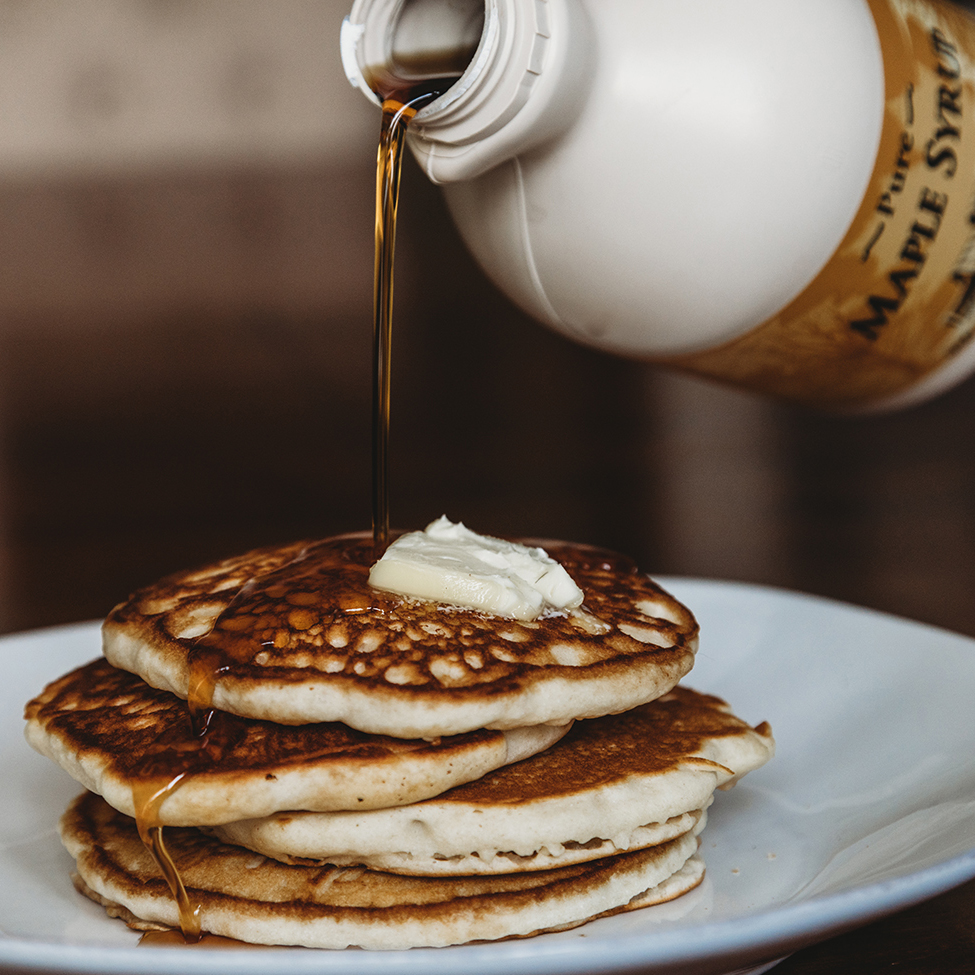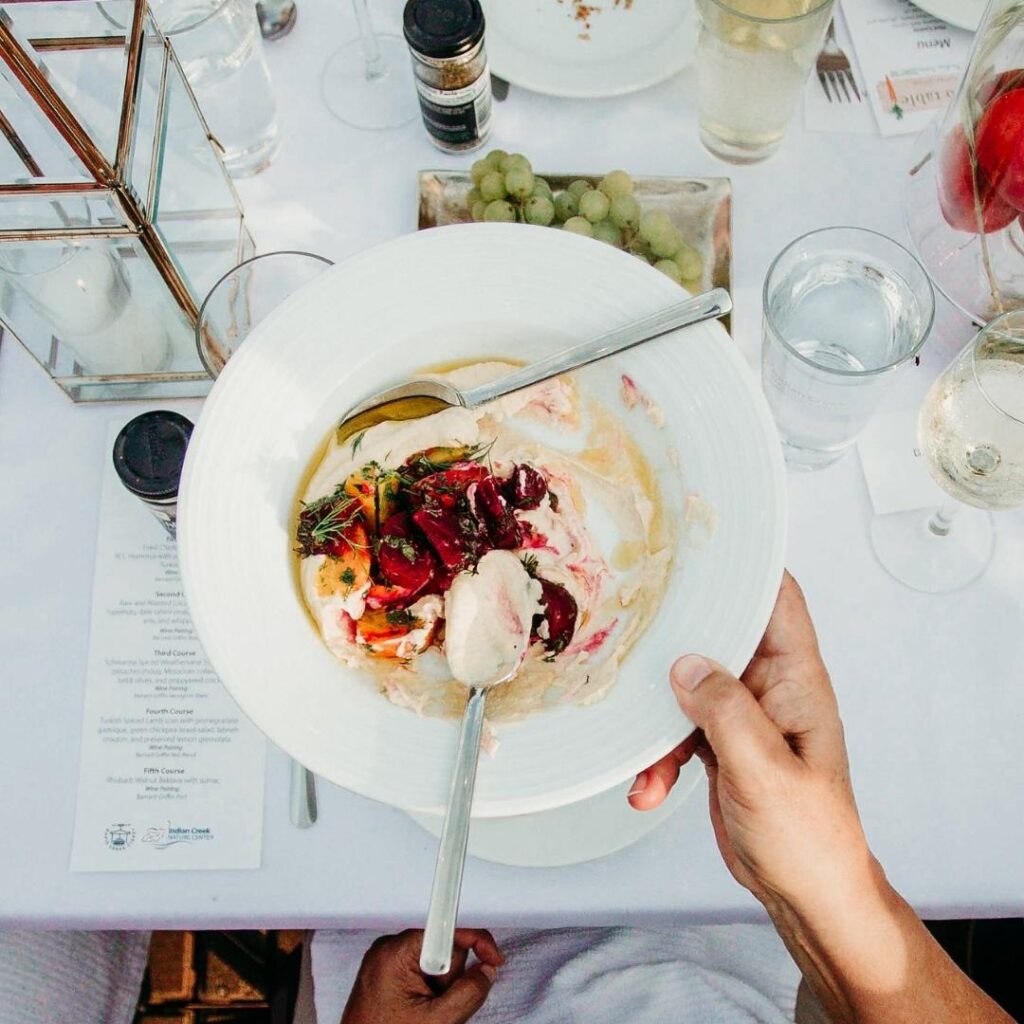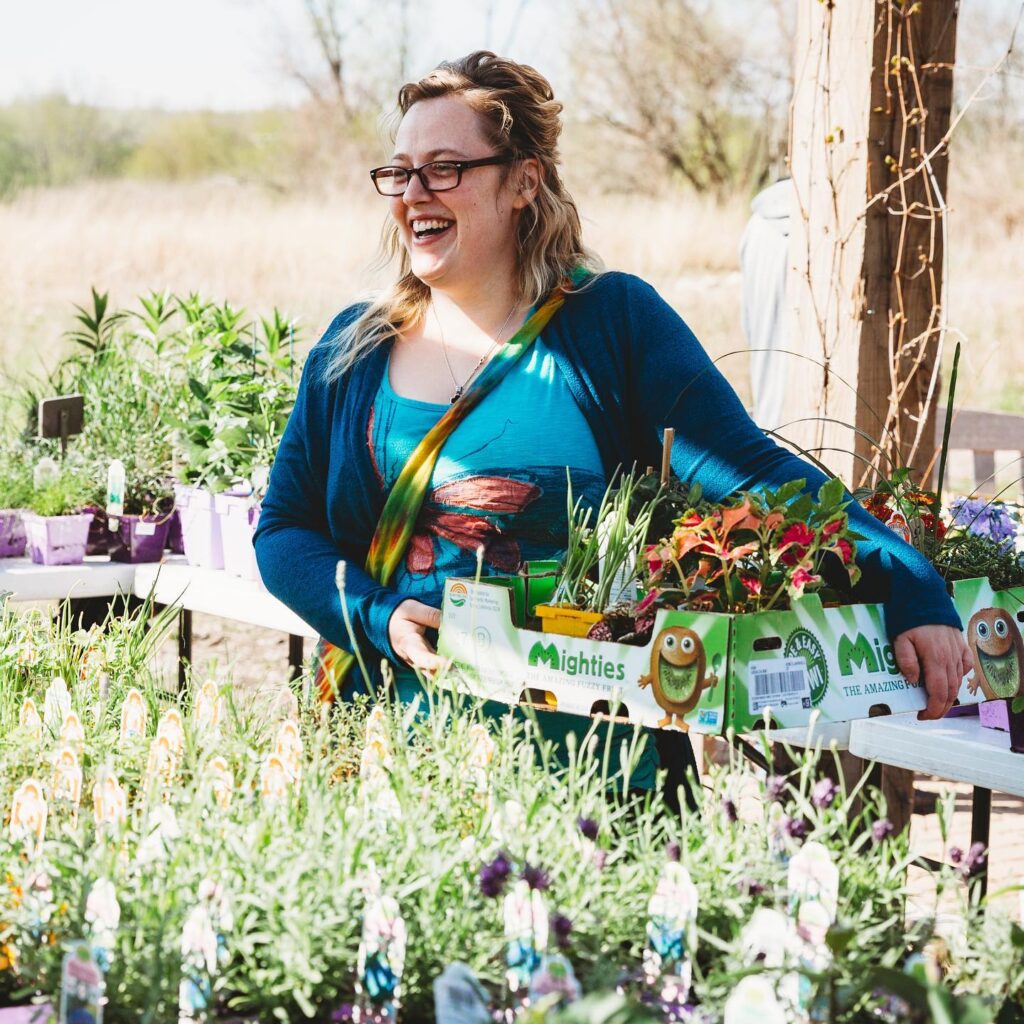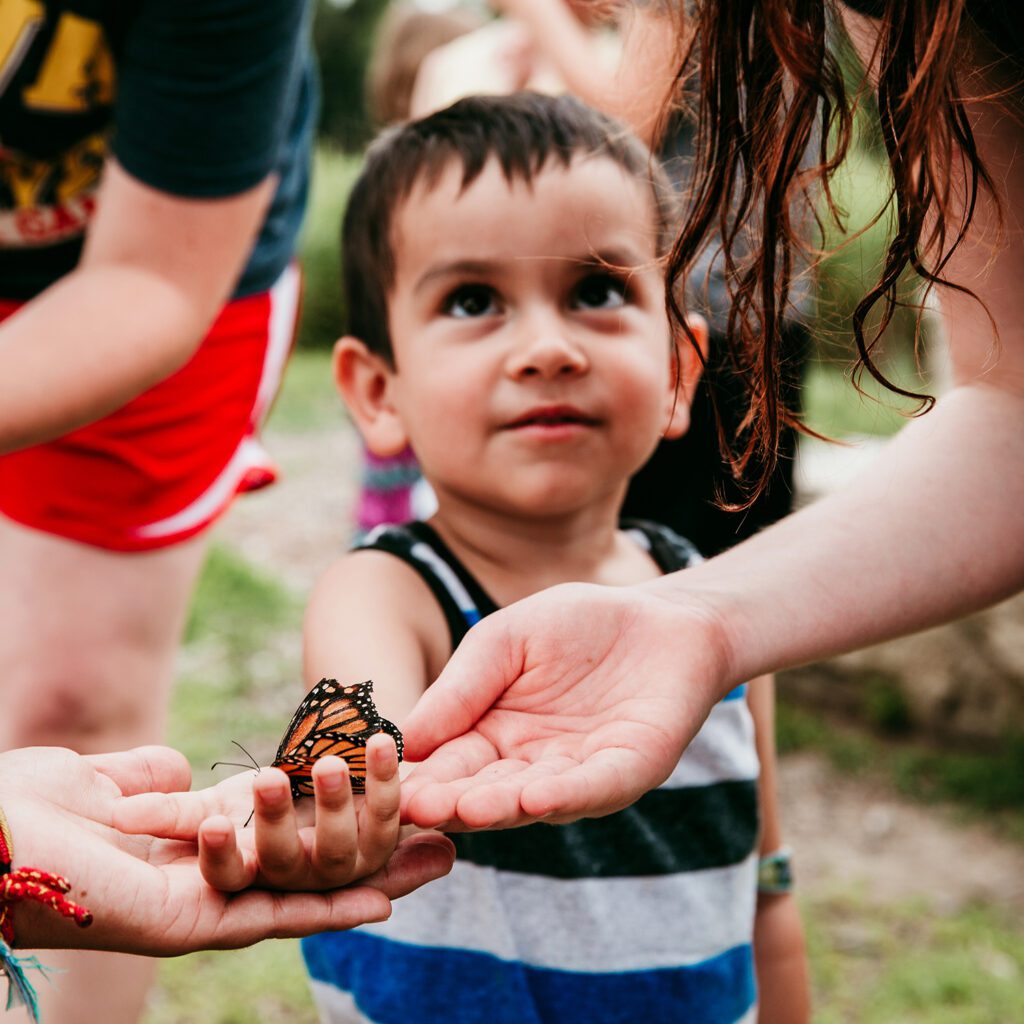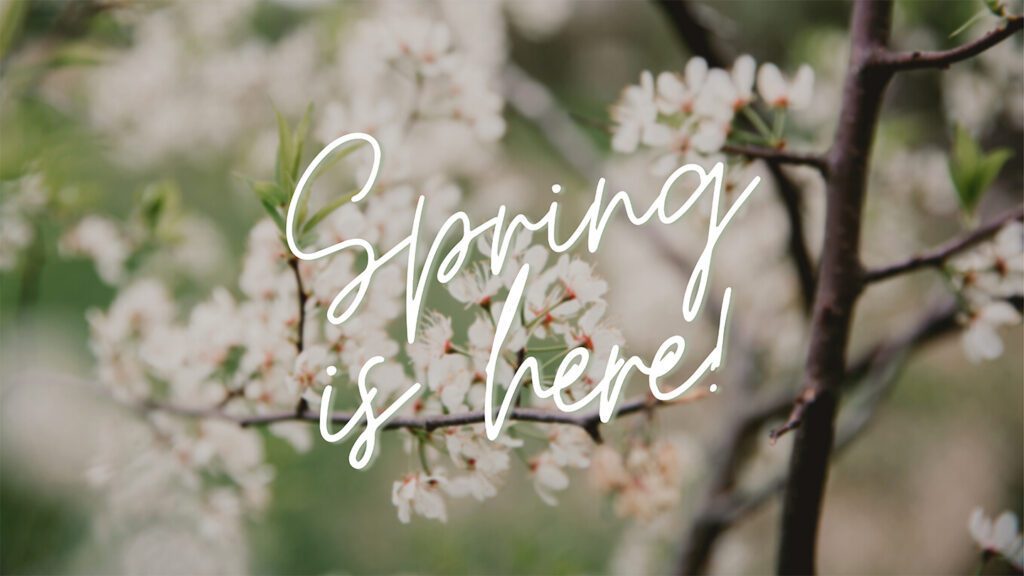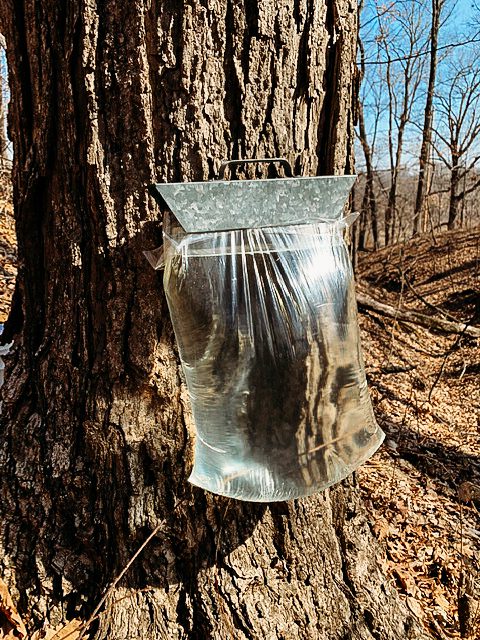
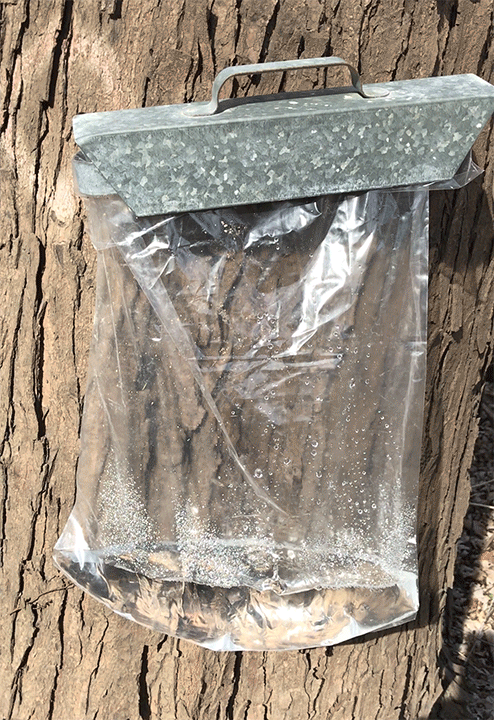
SAP FLOW
With warm daytime temperatures and cold nights, sap is flowing and filling bags left and right! Sap flow is over, so you should move this to the past tense. This year we tapped 103 trees, and have collected nearly 670 gallons of sap. We expect to end up with a yield of 11 to 12 gallons of maple syrup – it takes us about 50 gallons of sap to make one gallon of syrup. Sap from a sugar maple is usually 2-3% sugar, while others like silver maples and box elder trees have lower sugar contents.While all three types provide good sap, the lower the sugar content, the more firewood, boiling, and patience is required. The longer the sap boils, the darker it gets, creating a more robust flavor.
Want to learn more about the syrup-making process? Grab your tickets to the Maple Syrup Festival (March 26 & 27) or watch our video about how sap flows.
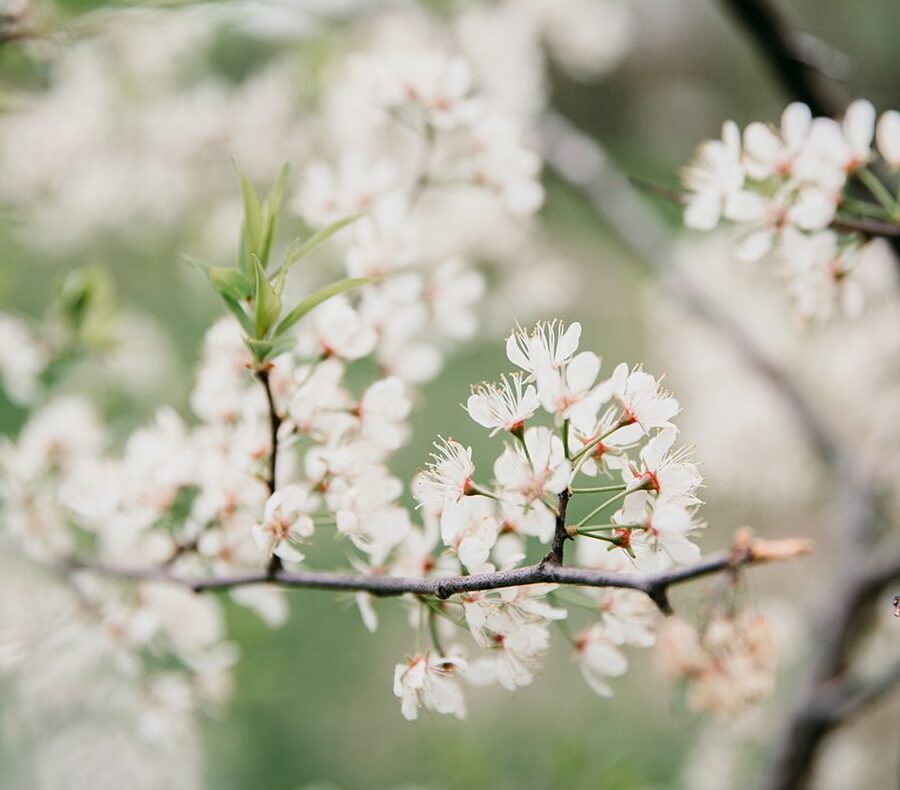 BUDDING TREES
BUDDING TREES
Have you noticed trees and shrubs beginning to bud? Trees are waking up from winter dormancy and beginning to grow new leaves. Plants depend on temperature to perform the chemical reactions for growth and development. When temperatures warm up to the 50s, 60s or higher, buds will begin to form more quickly. As the buds grow, they use up the sugars and other nutrients they have to sustain rapid growth. Some trees — such as Lindens, Kentucky Coffees and Crab Apples — will begin to produce brightly colored and aromatic flowers, attracting pollinators like butterflies and bees. Pollinators travel from blossom to blossom, dropping pollen and providing nutrients to each plant they stop at along the way.
SPRING PEEPERS
Stop and listen! Do you hear that high-pitched peep peep peep? Kind of sounds like a young chicken…but it’s actually a frog! What you’re hearing is the vocalization of a spring peeper (Pseudacris crucifer). Spring peepers are among the first frogs to call in the spring, not long after the ice melts on the wetlands.
NESTING BIRDS
Two sure signs of spring are the arrival of nesting geese and sandhill crane sightings. Geese nest on the island at the Lynch Wetland and have been seen swimming nearby. Sandhill cranes were also recently spotted nesting on a property in Bertram about three miles from the Nature Center!
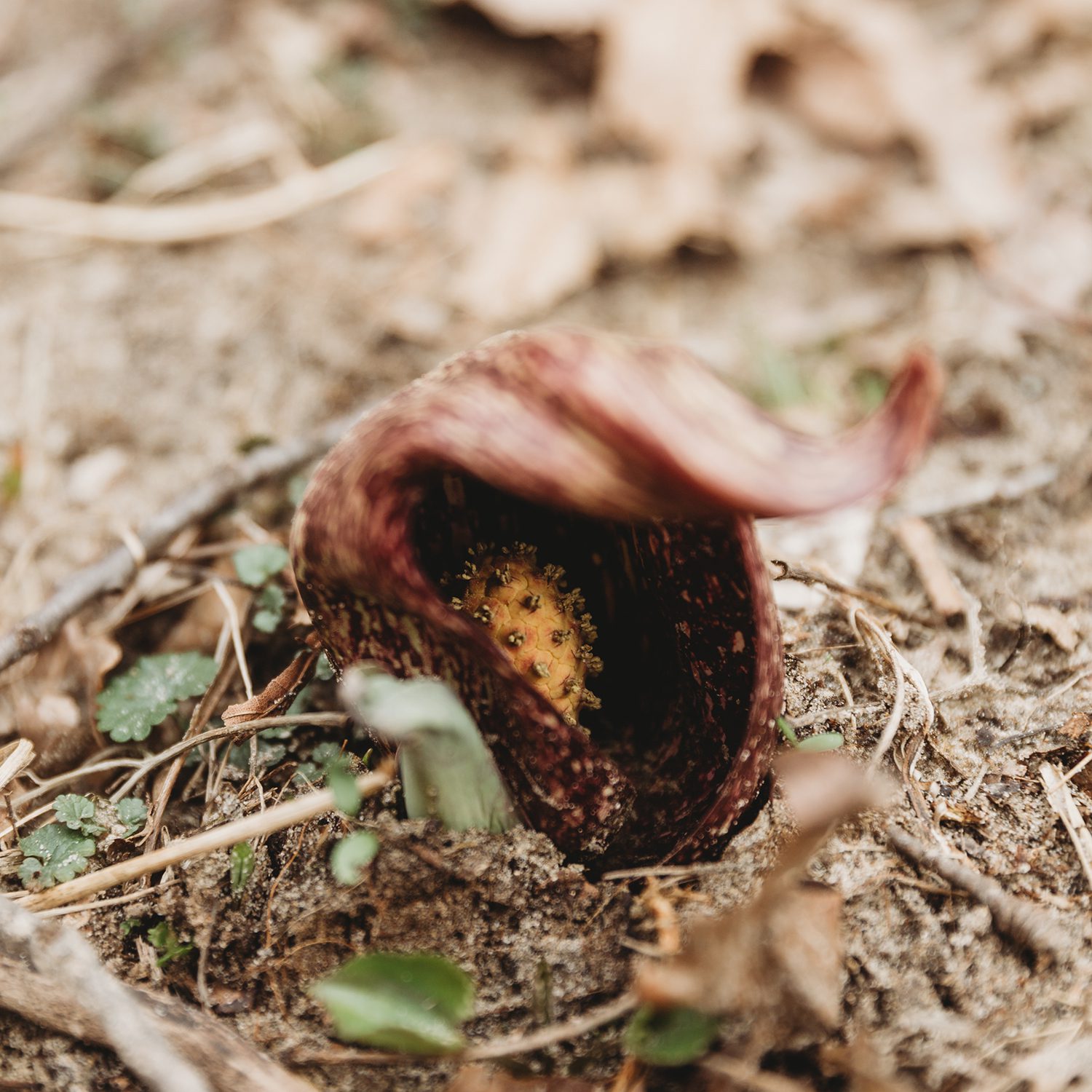 SKUNK CABBAGE
SKUNK CABBAGE
Skunk cabbage is a flowering perennial and is one of the first plants to emerge in the spring, typically between late February and May. Named for its unpleasant odor, the skunk cabbage scent attracts certain pollinators interested in the smell of rotting meat. Somewhat odd-looking, with a maroon hoodlike leaf called a spade surrounding a knob-like structure called a spadix, they are pretty unmistakable. They are not directly off the trail, but do exist on our property.
SPRING SPECIAL EVENTS
Of course, spring at the Nature Center also means it’s time for a few of our favorite events. This weekend (March 26 & 27) we’ll celebrate the end of the syruping season with the 39th annual Maple Syrup Festival — returning in person this year with an all-you-can-eat pancake breakfast. Speaking of food…our first Farm to Table Dinner of the year will be on April 28, featuring a five-course meal from Chef Steigerwald of Wilson’s Ciderhouse. Then, on the first Saturday in May (May 7), the annual Spring Plant & Art Sale returns just in time for Mother’s Day. Don’t forget to pick up your milkweed plants…you’ll want some on hand if you adopt a caterpillar at this year’s Monarch Fest on July 9!
